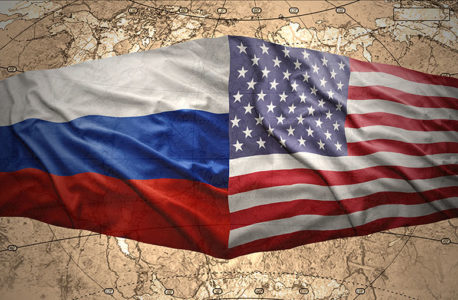Wrtiten by Mathew Maavak; Originally appeared on activistpost.com
The year 2019 had barely begun before news emerged that six Russian sailors were kidnapped by pirates off the coast of Benin. It was perhaps a foretaste of risks to come. As nations reel from deteriorating economic conditions, instances of piracy and other forms of supply chain disruptions are bound to increase.
According to the International Maritime Bureau (IMB), 107 cases of piracy were noted during the first half of 2018 vis-à-vis 87 throughout 2017. The 2018 tally included 32 cases in Southeast Asian waters and 48 along African shores – representing 75% of the total. To put this figure into perspective, Asian behemoths India and China – despite their vast shorelines – recorded only 2 cases of piracy each during the study period. Russia had none. In terms of hostages taken, the IMB tally read 102 in H1 2018 vs 63 in H1 2017.
Piracy adds to shipping and retail costs worldwide as security, insurance and salaries are hiked to match associated risks in maritime transport. Merchant vessels will also take longer and costlier routes to avoid piracy hotspots.
A United Nations Office on Drugs and Crime (UNODC) report in 2016 sums up the perils ahead:
As over 90% of global trade is carried out by sea, the economic effects of maritime crime can be crippling. Maritime crime includes not only criminal activity directed at vessels or maritime structures, but also the use of the high seas to perpetrate transnational organized crimes such as smuggling of persons or illicit substances. These forms of maritime crime can have devastating human consequences.
Indeed, cases of human trafficking, organ harvesting, and the smuggling of illicit substances and counterfeit goods are proliferating worldwide in tandem with rising systemic debt and suspect international agendas.
Australia offers a case in point. While it fantasizes over a Quad of allies in the Indo-Pacific – to “save Asians from China” – criminal elements from Hong Kong, Malaysia to squeaky-clean Singapore have been routinely trafficking drugs, tobacco and people right into Sydney harbour for years, swelling the local organised crime economy to as much as $47.4 billion (Australian dollars presumably) between 2016 and 2017.
With criminal elements expected to thrive during a severe recession, they will likely enjoy a degree of prosecutorial shielding from state actors and local politicians. But this is not a Southeast Asian problem alone; any superpower wishing to disrupt Asia-Europe trade arteries – the main engine of global growth – will have targets of opportunity across oceans and lands. The US-led war against Syria had not only cratered one potential trans-Eurasia energy and trade node, it served as a boon for child trafficking, organ harvesting and slavery as well. Yet, it is President Bashar al-Assad who is repeatedly labelled a “butcher” by the Anglo-American media.
Ultimately, industries in Asia and Europe will seek safer transit routes for their products. The inference here is inevitable: the greatest logistical undertaking in history – China’s Belt and Road Initiative (BRI) – will be highly dependent on Russian security umbrella, particularly in Central Asia. Russia also offers an alternative transit option via the Northern Sea Route, thereby avoiding any potential pan-Turkic ructions in Central Asia in the future.
Russo- and Sinophobia explained?
In retrospect, Washington’s reckless policies post-Sept 11 2001 seem aimed at disrupting growing synergies between Asia and Europe. This hypothesis helps explain the relentless US-led agitprops against Russia, China and Iran.
When the gilet jaunes (yellow vest) protests rocked France weeks ago, it was only a matter of time before some pundits blamed it on Russia. US President Donald J. Trump cheered on; just as “billionaire activist” George Soros celebrated the refugee invasion of Europe and the Arab Spring earlier. If the yellow vest contagion spreads to the Western half of Europe, its economies will flounder. Cui bono? A Russia that can reap benefits from the two-way BRI or Arctic trade routes or a moribund United States that can no longer rule roost in an increasingly multipolar world?
Trump’s diplomatic downgrade of the European Union and his opposition to the Nord Stream 2 gas pipeline matches this trade-disruption hypothesis, as do pressures applied on India and China to drop energy and trade ties with Iran. Washington’s trade war with Beijing and recent charges against Huawei – arguably Asia’s most valuable company – seem to fit this grand strategy.
If China concedes to importing more US products, Europe will bear the consequences. Asians love European products ranging from German cars to Italian shoes and Europe remains the favourite vacation destination for its growing middle class. Eastern European products and institutions are also beginning to gain traction in Asia. However, these emerging economies will suffer if their leaders cave in to Washington’s bogeyman fetish.
Even if Europe is somehow taken out of the trade equation, greater synergy between the RIC (Russia, India and China) nations may be enough – at least theoretically – to pull their nations through anticipated global volatilities ahead.
In the meantime, as the US-led world crumbles, it looks like Russia is patiently biding its time to become the security guarantor and kingmaker of Asia-Europe trade. A possible state of affairs wrought more by American inanity rather than Russian ingenuity…
Dr Mathew Maavak is a regular commentator on risk-related geostrategic issues.





RUSSIA THE GLOBAL TRADE PIVOT